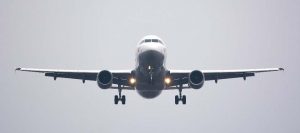Cargo has undeniably been a lifeline for the aviation industry during COVID-19. Before the pandemic, cargo typically made up around 12 percent of the sector’s total revenue; that percentage is believed to have tripled last year.
In fact, recent data from the International Air Transport Association (IATA) shows that demand for the global air cargo market has recovered to pre-pandemic levels. With January being up 1.1% compared to 2019, February up by 9% and March by 4.4%.This is partly because many airline companies have utilised their main passenger cabins as cargo space for over a year, helping to plug the shortfall in both the air freight and aviation industries.
 However, with the return of international travel, all that is set to end, as seats are once again occupied by passengers. And as commercial flights gradually return, belly supply will increase, although it is not expected to reach pre-COVID-19 levels for at least a few years. And that could spell trouble for the cargo industry.
However, with the return of international travel, all that is set to end, as seats are once again occupied by passengers. And as commercial flights gradually return, belly supply will increase, although it is not expected to reach pre-COVID-19 levels for at least a few years. And that could spell trouble for the cargo industry.
Passenger Problems
As airlines refocus on passengers over products and cargo returns to mainly belly supply, the question needs to be asked: is there enough demand from passengers to help right the ship?
Latest figures suggest forward bookings for the summer are down 78%, and while many are hopeful the ongoing vaccine rollout in developed countries will bring back customers in the second half of the year, is that quick enough for airlines already burdened with debt?
The IATA recently downgraded its outlook for the year because of the worsening situation, saying it expects the industry to have negative cash flow through 2021 after previously estimating airlines would collectively break even in the fourth quarter.
Roughly 50% of the world’s air cargo goes by belly supply, and while demand for cargo may be up it is estimated that while passenger flight numbers remain at a reduced amount, there will be a shortage in capacity for air cargo of around 12-13%.
As travel restrictions ease, so will the predicted shortage but is there another danger waiting in the wings?
Operational Obstacles
Before any cargo can reach its destination, flight operators must navigate several challenges including airport curfews, border restrictions and flight time limitations. Covid has only worsened with the introduction of new country-specific restrictions, such as the ‘Traffic Light’ system in the UK.
If an aircraft is permitted to land in a particular country, depending on where they flew from and where they landed, the crew can be subject to extensive quarantine and testing regulations. In some cases, this could see them spending up to two weeks in a hotel room upon arrival, causing severe disruption to the operator. Without a crew, there’s no aircraft and without an aircraft they can’t make other vital cargo journeys.
As countries are expected to be able to shift from one tier of the system to another, sometimes with minimal warning, these regulations have the potential to wreak havoc on cargo taken by passenger flights.
An Uncertain Future
It is difficult to overstate just how much the COVID-19 pandemic has devastated airlines and by extension the impact it has played on the air cargo industry.
The rise of the so-called Preighter, a passenger plane acting as a freighter, has undoubtedly softened the blow and helped the industry bounce back faster. However, there are still challenging times ahead.
Despite some of the uncertainties that still hang over both airlines and air freight services, the IATA is forecasting a 13% growth in the share of cross-border trade taken by air.
However, for all the devastation that the pandemic has caused for aviation, there is one positive thing going forward.By estimates, the Covid crisis has accelerated the global transition to ecommerce by around five years.
Which will only benefit providers of cargo transportation in the years to come as Sav Aulakh from Freightline Carriers explains.
Sav Aulakh, Managing Director at Freightline, says: “There is no denying how difficult the last year has been for the industry as a whole but we are slowly seeing signs of recovery. And with that comes the need to look ahead, past Covid. We already knew that online ordering would shape the industry’s future, but the pandemic has provided us with a snapshot of what that really looks like for local freight transport providers and what steps the industry needs to take in order to make sure we are ready for that future.
“For the aviation industry, in particular, there is a lot of opportunity at the moment to better prepare themselves for that future. As we’ve seen over the last year, passenger aircraft can be used to transport cargo when passenger flights are impossible. Investing in this idea of the ‘Preighter’ now while demand for cargo is so high would allow airline operators to investigate short- to medium-term opportunities to boost their cargo services without the risks involved in maintaining a larger dedicated freighter fleet.”















